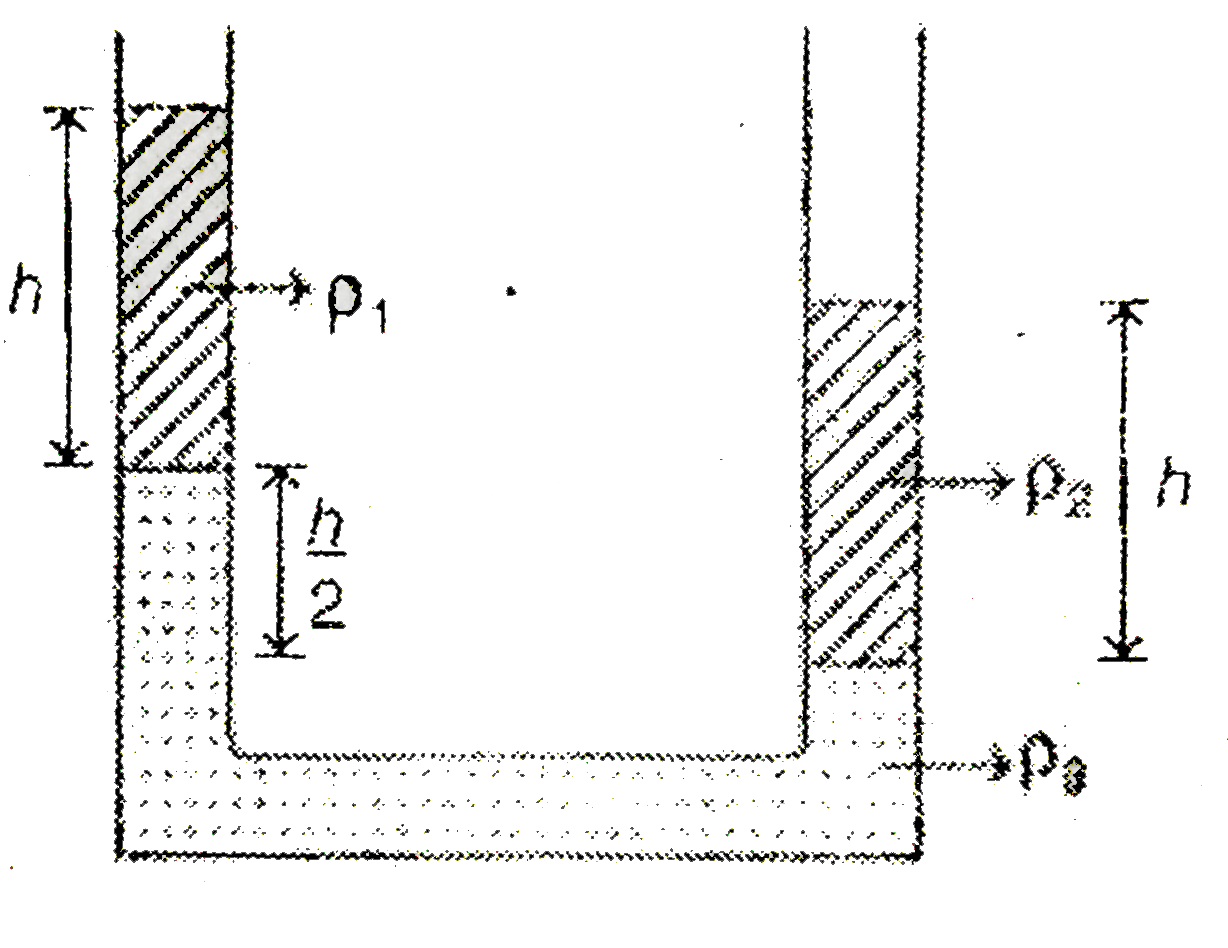Three liquids of equal masses are taken in three identical cubical vessels A, B and C. Their densities are ρA,ρB and ρC respectively but ρA<ρB<ρC. The force exerted by the liquid on the base of the cubical vessel is
maximum in vessel C
minimum in vessel C
the same in all the vessels
maximum in vessel A
The correct Answer is:C
Force exetred by the liquid on the base of the vessel is
F = mg
Here, mA=mB=FC
Topper's Solved these Questions
- BOOK - DC PANDEYCHAPTER - FLUID MECHANICSEXERCISE - B) Medical entrance special format question19videos
FLUID MECHANICS
- BOOK - DC PANDEYCHAPTER - FLUID MECHANICSEXERCISE - Match the columns6videos
FLUID MECHANICS
- BOOK - DC PANDEYCHAPTER - FLUID MECHANICSEXERCISE - Check point 13.410videos
FLUID MECHANICS
- BOOK - DC PANDEYCHAPTER - EXPERIMENTSEXERCISE - Subjective15videos
EXPERIMENTS
- BOOK - DC PANDEYCHAPTER - GENERAL PHYSICSEXERCISE - INTEGER_TYPE2videos
GENERAL PHYSICS
Similar Questions
Equal mass of three liquids are kept in three identical cuylindricasl vessels A, B and C. the densities are ρA,ρB,ρCwithρA<ρB<ρC. The force on the base will be
View SolutionA solid uniform ball having volume V and density ρ floats at the interface of two unmixable liquids as shown in the figure. The densities of the upper and the lower liquids are ρ1 and ρ2 respectively, such that ρ1<ρ<ρ2 . What fraction of the volume of the ball will be in the lower liquid ?
 View Solution
View Solution
Knowledge Check
- Question 1 - Select One
Three liquids of equal masses are taken in three identical cubical vessels A,B and C. Their densities are ρA,ρB and ρC respectively but ρA<ρB<ρC. The force exerted by the liquid on the base of the cubical vessel is
Amaximum in vessel CBminimum in vessel CCthe same in all the vesselsDmaximum in vessel A - Question 2 - Select One or More
Three different liquids are filled in a U-tube as shown in figure. Their densities are ρ1,ρ2 and ρ3 respectively. From the figure we may conclude that
 Aρ2>ρ1Bρ1>ρ2Cρ3=2(ρ2−ρ1)Dρ3=ρ2+ρ12
Aρ2>ρ1Bρ1>ρ2Cρ3=2(ρ2−ρ1)Dρ3=ρ2+ρ12 - Question 3 - Select One
A solid uniform ball having volume V and density ρ floats at the interface of two unmixible liquids as shown in Fig. 7(CF).7. The densities of the upper and lower liquids are ρ1 and ρ2 respectively, such that ρ1<ρ<ρ2. What fractio9n of the volume of the ball will be in the lower liquid.
 Aρ−ρ2ρ1−ρ2Bρ1ρ1−ρ2Cρ1−ρρ1−ρ2Dρ1−ρ2ρ2
Aρ−ρ2ρ1−ρ2Bρ1ρ1−ρ2Cρ1−ρρ1−ρ2Dρ1−ρ2ρ2
Two disc has same mass rotates about the same axis with their densities ρ1 and ρ2 respectively such that (ρ1>ρ2), then the relation between I1 and I2 will be
View SolutionThree identical vessels are filled to the same height with three different liquids A, B and C(ρA>ρB>ρC). The pressure at the base will be
View SolutionThree identical vessels are filled with equal masses of three different liquids A,B and C(ρA>ρB>ρC). The pressure at the base will be
View SolutionA solid sphere having volume V and density ρ floats at the interface of two immiscible liquids of densityes ρ1 and ρ2 respectively. If ρ1<ρ<ρ2, then the ratio of volume of the parts of the sphere in upper and lower liquid is
View SolutionThree liquids of densities ρ1,ρ2 and ρ3 (with ρ1>ρ2>ρ3), having the same value of surface tension T, rise to the same height in three identical capillaries. The angles of contact θ1,θ2 and θ3 obey
View Solution

